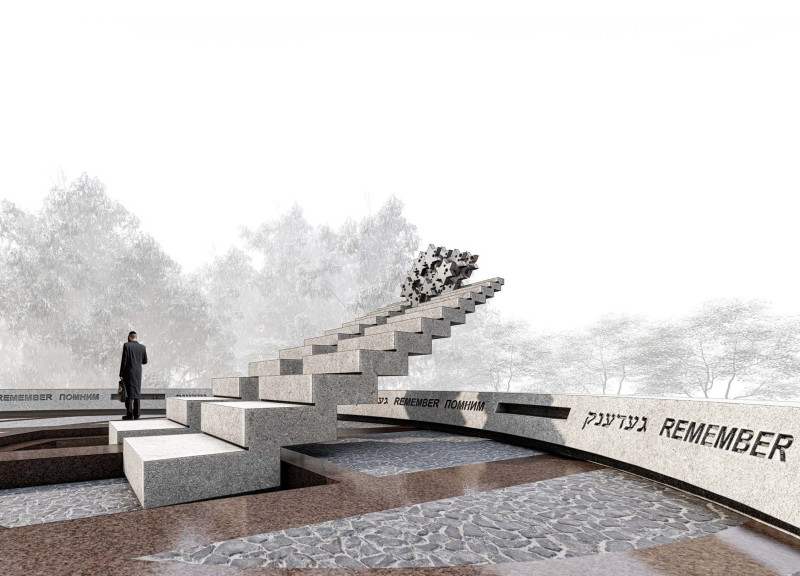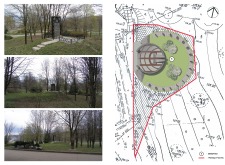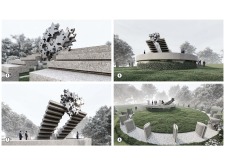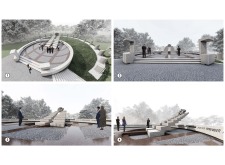5 key facts about this project
The structure presents a circular layout that fosters inclusivity and unity. This design choice allows multiple vantage points, enhancing visitor interaction and engagement. A prominent sculptural element stands at the center, symbolizing themes of fragmentation and growth, while tiered steps lead visitors toward this focal point. The integration of pathways encourages exploration of the space, allowing for individual reflection as well as opportunities for communal gatherings.
One of the project's unique aspects is its innovative approach to memorialization through interactive features. Unlike traditional static memorials, this design invites visitors to engage physically with the space. The sculptural features, potential water elements, and integrated vegetation create a dynamic setting that transcends passive remembrance. The use of durable materials such as granite, concrete, and steel forms a stark yet harmonious contrast with the natural surroundings, further enhancing the sensory experience. The conscientious incorporation of landscaping not only beautifies the site but also underscores the importance of nature in the process of remembrance.
The architectural design reflects a commitment to eco-conscious principles. Natural vegetation frames the memorial, effectively integrating the project within its environment while promoting sustainability. This attention to environmental detail aligns with contemporary architectural practices, demonstrating an awareness of the relationship between built spaces and their ecological contexts.
For those interested in understanding this project in depth, further exploration of architectural plans, sections, and designs will provide valuable insights into the creative processes and design choices made throughout the project. This architectural endeavor stands as a thoughtful contribution to both memorialization practices and community engagement, epitomizing a modern approach to remembrance.

























